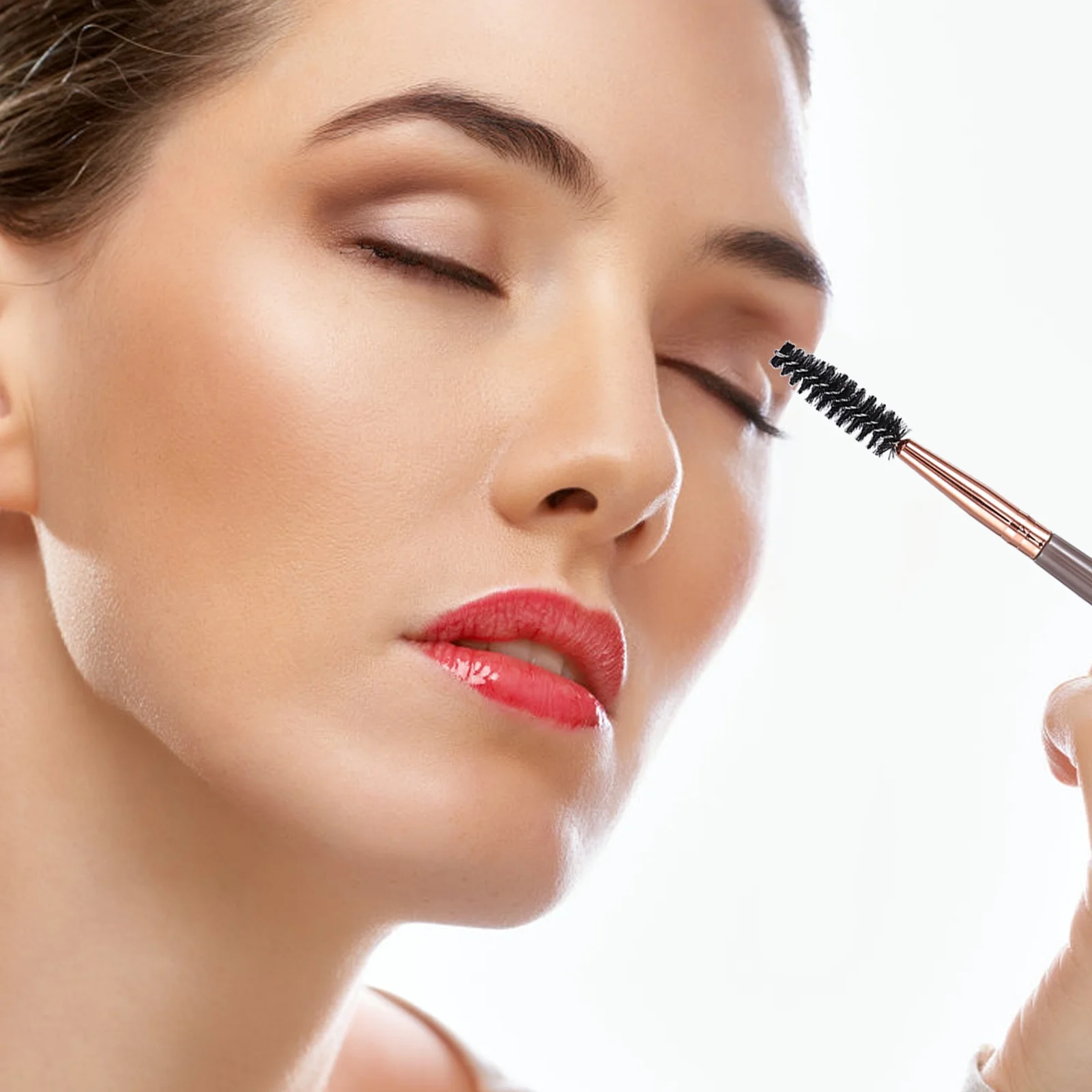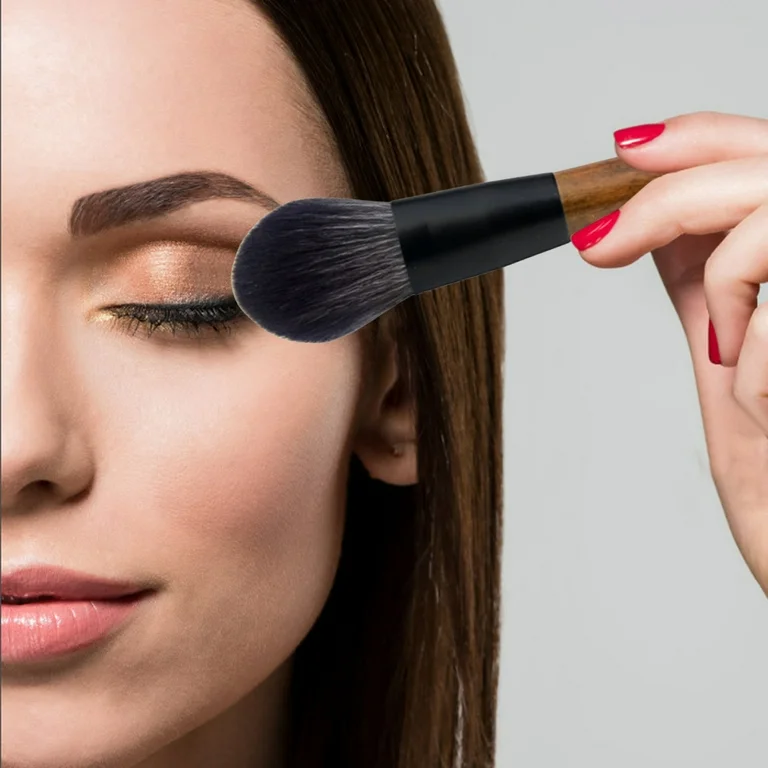
Efficient Makeup Brush Cleaning Techniques
Importance of Regular Brush Cleaning
Regular cleaning of makeup brushes is essential for several reasons. First, it prevents the buildup of harmful bacteria that can cause skin irritation, breakouts, and infection. How to clean makeup brushes?Bacteria thrive in the residue left on brushes after use, so frequent washing is necessary for maintaining healthy skin.
Clean brushes also perform better, allowing for smoother application and more precise makeup results. As bristles hold onto creams and powders, they become stiff and less effective. Removing old makeup from the brush fibers restores their flexibility and softness, enhancing your makeup experience.
Moreover, cleaning your brushes regularly extends their lifespan, saving you money in the long run. Makeup brush fibers, whether natural or synthetic, deteriorate over time when clogged with products. By keeping them clean, you preserve their structure and prevent excessive shedding.
Good brush maintenance also reflects on your personal hygiene. Using clean brushes shows care for your skin and overall well-being, giving you peace of mind that you’re not transferring old makeup or oil back onto your face.
For makeup artists, clean brushes are a sign of professionalism. Clients expect high sanitary standards, and providing them ensures trust in your services and client satisfaction.
In conclusion, regular brush cleaning benefits your skin health, brush functionality, longevity, personal hygiene, and professional image. Incorporate brush cleaning into your beauty routine to reap these rewards.

Selecting the Right Cleaning Solution
Selecting an effective cleaning solution is critical in maintaining your makeup brushes. Whether you have brushes with natural or synthetic bristles, the right cleanser will ensure they are thoroughly clean and remain in good condition. It’s essential to choose a gentle yet effective solution to avoid damaging the brush fibers while still removing all traces of makeup and bacteria.
Natural vs. Synthetic Bristle Considerations
When it comes to brushes with natural bristles, these are typically more delicate. They require cleaners that are mild and conditioning to keep the bristles soft. Baby shampoo or a mild hair conditioner can be a good choice for these brushes. For synthetic bristles, which are usually more durable, you can opt for regular gentle shampoos or even dish soap, as they can withstand stronger cleaning agents.
DIY Cleaning Solutions
For those who prefer a homemade approach, DIY cleaning solutions can be both cost-effective and easy to make. Common household items like olive oil and dish soap can create a cleaning mixture that effectively removes makeup residue. Simply mix two parts dish soap with one part olive oil, this combination breaks down the buildup without being too harsh. Another option is to use a mixture of gentle shampoo and warm water for a simple cleaning solution.
Step-by-Step Guide to Washing Makeup Brushes
Preparing Your Cleaning Station
Before you get started, gather all the supplies you’ll need in one place. First, select a clean, level surface near a sink and lay down a towel or cleaning mat. You will also require appropriate cleansers based on your makeup brush type—synthetic or natural bristles—and a small bowl or cup for mixing homemade cleaning solutions if you’re opting for the DIY route. Always ensure you have plenty of water for rinsing, and prepare a dry area where brushes can lay flat to air dry after washing.
Deep Cleaning Process
Start by running your brushes under lukewarm water to remove surface residue. Avoid wetting the brush’s handle to preserve the glue holding the bristles. Dip the wet bristles into your chosen cleanser or a prepared soapy mixture. Gently massage the bristles in your palm or on a cleaning mat to lather, ensuring you dislodge all makeup and debris. Once thoroughly cleaned, rinse the brush under running water until clear of soap. Squeeze out excess moisture with clean hands or a paper towel and reshape the brush head to its original form before laying it flat to dry on the prepared dry area.

Quick-Drying Techniques for Brushes
After cleaning your makeup brushes, quick drying is crucial. How to clean makeup brushes? Here’s how to do it right.
Lay Brushes Flat to Air Dry
Immediately after washing, gently press the bristles to remove excess water. Lay brushes flat on a clean towel. Ensure the bristles hang off the edge of the counter to air out properly.
Use a Brush Drying Rack
If available, a brush drying rack can be a handy tool. It allows brushes to dry in the ideal position. The benefit of using a rack is that air circulates freely around the bristles for faster drying.
Avoid Direct Heat Sources
Steer clear of blow dryers or placing brushes near heaters. Intense heat can damage the bristles. It may also melt the glue that holds the brush together.
Shape Bristles When Wet
While the brush is damp, reshape the bristles to their original form. This helps them dry quickly and maintain their shape for the next use.
Rotate Brushes if Necessary
If you have multiple brushes, rotate them between uses. This gives each brush ample time to dry naturally before you need to use it again.
By following these tips, your brushes will be dry and ready to use in no time, without any damage.
Proper Storage Solutions for Brushes
Proper storage of makeup brushes can enhance their longevity and maintain hygiene levels. After cleaning and drying your brushes, choosing the right storage method is crucial to keep them in prime condition for future use.
Avoiding Common Storage Mistakes
- Do Not Store Brushes in Tightly Packed Spaces: Storing brushes too closely in containers or makeup bags can deform their bristles. Always ensure they have enough space to retain their shape.
- Avoid Moist Environments: Keep your brushes in a dry area. Storing them in bathrooms where humidity levels are high may cause them to retain moisture, leading to bacterial growth.
- Prevent Direct Sunlight Exposure: Direct sunlight can damage brush bristles over time. Store them in a shaded drawer or cabinet.
- Don’t Keep Brushes Vertically with Bristles Up: This can cause any residual moisture to seep towards the handle, potentially damaging the glue that holds the bristles.
Storing your brushes correctly will ensure they remain hygienic and effective for a longer time, protecting your skin and makeup application quality.

Recognizing When to Replace Makeup Brushes
Recognizing when to replace your makeup brushes is as critical as keeping them clean. Here’s what to watch out for:
Check Brush Bristle Condition
Regularly inspect the condition of your brush bristles. If you notice bristles starting to fray, shed, or change in shape, it’s time for a new brush. This applies to both synthetic and natural fibers. Good bristle health ensures smooth makeup application.
Observe Handle and Ferrule Stability
Loose handles or ferrules—the metal part that binds bristles to the handle—mean it’s replacement time. These issues can cause a lack of control during application, affecting makeup precision.
Monitor Application Consistency
If you observe a decline in the quality of your makeup application, your tools may be the cause. When brushes lose their efficiency, streaky or patchy application often occurs. This is a sign that your brush has lived its course.
Consider Hygiene
Sometimes brushes can become impossible to clean thoroughly. Persistent stains or lingering smells are indicators that it’s time to let go. Keeping hygienic tools is paramount for skin health.
Assess Frequency of Use
The more frequently you use a brush, the sooner you’ll need to replace it. Brushes used daily tend to wear out quicker than those used less often. Adjust replacement intervals based on how often you use your brushes.

Tips for Hygienic Makeup Application
To maintain the hygiene of your makeup application process, follow these simple yet essential tips.
Use Fresh Products
Always use fresh makeup to avoid skin irritation. Check expiration dates and don’t use old products.
Regular Sponge Replacement
Replace makeup sponges regularly to prevent bacterial growth. They are harder to clean thoroughly than brushes.
Single Use of Disposable Tools
For applicators like mascara wands or sponge-tipped eyeshadow applicators, use disposables and avoid reusing them.
Wash Hands Before Application
Washing your hands before applying makeup prevents the transfer of germs to your face and tools.
Daily Clean of High-use Tools
Tools used daily, particularly those for liquid makeup, should be cleaned after each use for safety.
Avoid Sharing Makeup
Sharing can spread bacteria. Keep your cosmetics to yourself to maintain good skin health.
No Double Dipping
Once a brush touches your face, don’t dip it back into the product without cleaning. This keeps your makeup products pure.
Following these tips can greatly reduce the risk of skin irritations and infections. Keep your makeup routine safe and hygienic to ensure a healthy and radiant complexion.

